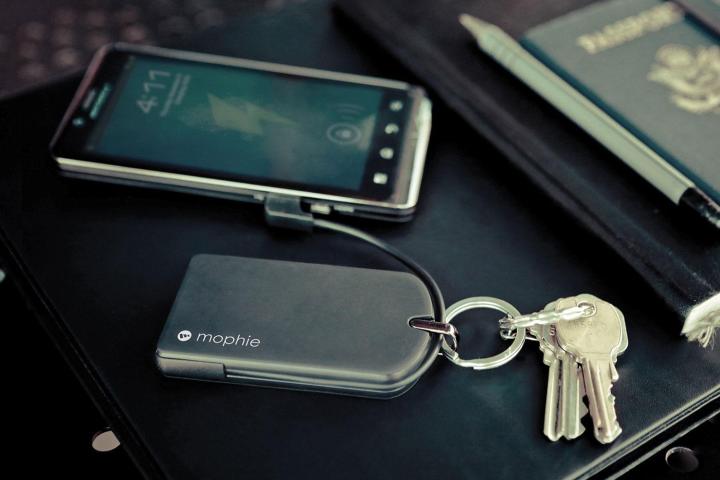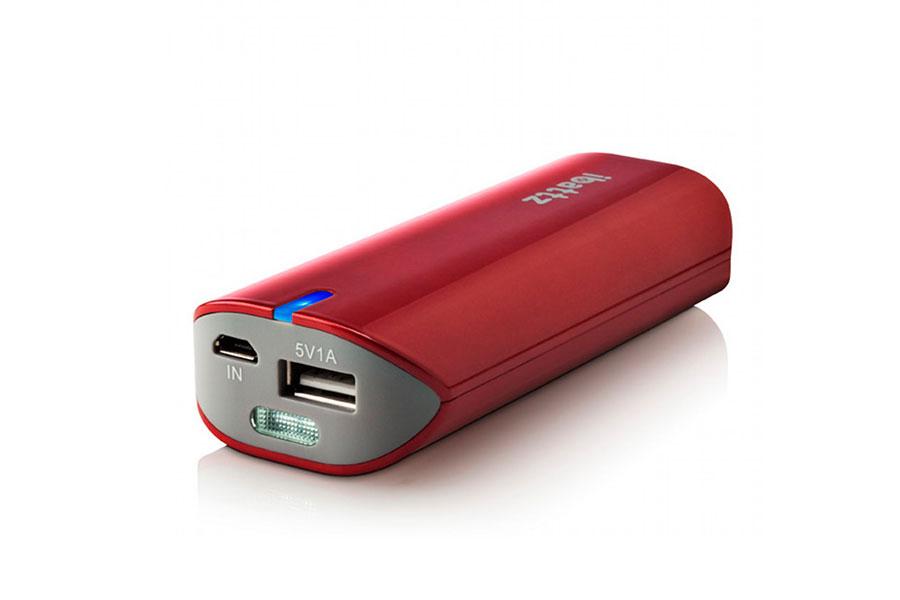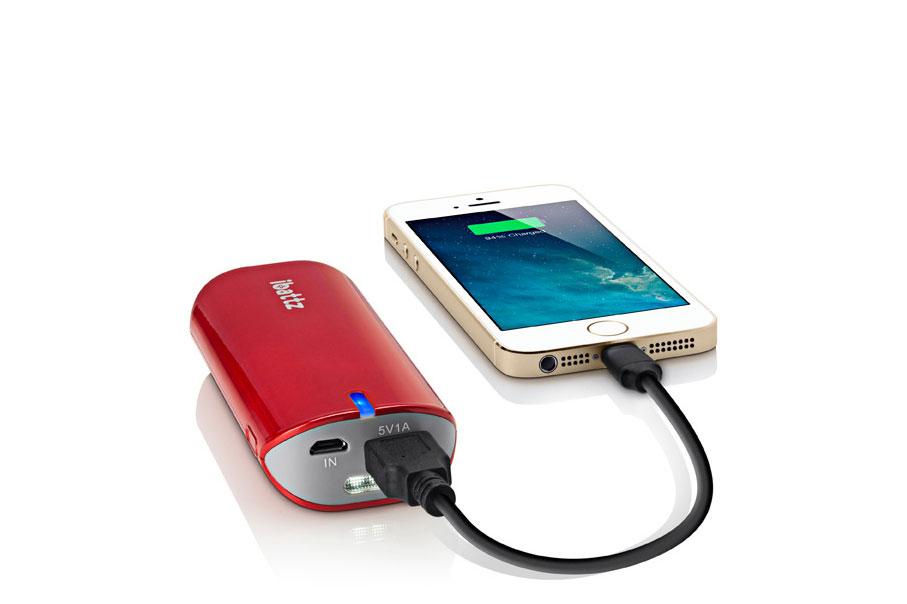
Temper your expectations some and keep an eye on manufacturer claims.
Enter the portable battery charger. These things come in all kinds of shapes, sizes, colors and configurations, and they all promise to keep your devices juiced up when there’s no free wall socket to be found. But how do you find the best device in a category swimming with seemingly identical bricks? Are they are the same, or should you be shopping around?
Don’t be fooled: Not all portable battery chargers are created equal, and there are certain things you will want to take into consideration when choosing a charger so that you wind up with the model that’s right for both you and your device. That’s what we’re here for. Here’s our guide on how to choose the best portable battery charger.
Big Gulp or kiddie cone?
When considering a portable battery charger, you’ll need to be prepared to make a compromise between capacity – how much juice the charger provides – and portability. More capacity always means bigger, heavier batteries. You can buy a monster-sized pack capable of charging your power-hungry tablet once or twice, but it’s going to be too large to cram in your purse or pocket.

So, if you do a lot of traveling and need the ability to not only keep your tablet from going dark, but last for several more hours, go for a large, high-capacity charger that you can tote around in your travel bag. But, if you just need the ability to keep your low-draw smartphone or Bluetooth speaker going long enough until you can get to a wall outlet, then most pocket-friendly chargers should suit you just fine.
Understanding capacity
A battery’s capacity is expressed in terms of milliamp hours, or mAh. As you can imagine, larger devices, like tablets, have much higher-capacity batteries built in because they often draw more power.
For example, the iPad 3 has a massive 11,666mAh battery, where as the iPhone 5 uses a 1,440 mAh cell. In the middle is the Ultimate Ears Mini Boom Bluetooth speaker, with a 6,000mAh battery inside.
- 1. ibattz Vogue BattStation 5600 USB portable rechargeable battery
- 2. ibattz Vogue BattStation 5600 USB portable rechargeable battery
Using a little math, you can begin to estimate out how useful a portable battery charger is going to be for your device. For example, the iBattz Mojo Vogue Battstation (one of our favorites) packs 5,600mAh worth of power. In theory, that should be enough to charge the iPhone 5 from dead to fully charged almost four times over (5600/1440=3.8888). If used to charge the iPad 3, however, the same battery will likely only take the tablet from 0 – 48 percent (5600/11,666=.48). Or, we can break things up a bit and estimate that the Battstation could charge an iPhone 5 to capacity, and boost the iPad 3’s battery up by about 35 percent (5600-1440=4160/11,666=.35).
However, those estimates rarely play out in reality. For instance, with the iBattz Mojo Vogue Battstation, we get about 2.5 iPhone 5 charges – not almost 4 – out of the device before it dies. That’s to say: Temper your expectations some and keep an eye on manufacturer claims.
What’s with the amperage ratings?
Ever plugged an iPad into one of the USB ports on your computer only to be told it is “plugged in, but not charging?” This is because the amperage of that USB port is too low to charge the device with any kind of reasonable speed. Technically, if you leave the iPad’s screen turned off and maybe disable its Wi-Fi and Bluetooth adapters, it will charge … in a few days. Still, that’s no way to live!
The best battery chargers will employ a simple integrated circuit.
Most portable battery charger manufacturers will disclose how many amps they can deliver: usually .5A, 1A, or 2A. Amperage tells you how quickly a battery pack can charge up your device.
Most tablets require a 2A charge output in order for their batteries to be replenished with any kind of speed. With a 2A charger, a tablet can be used while charging and still gain some capacity. Using a tablet while on a 1A charger, however, means that if you choose to use the device while “charging,” you’re just operating on the other battery’s power.
What about these “chips” I’m reading about?
The best battery chargers will employ a simple integrated circuit, or IC, to help ensure the safest, best possible charge delivery. These chips are able to recognize the state of the device battery that is being charged and change the charger’s behavior accordingly.

When a device’s battery is totally dead, you don’t want to just slam it with full-force electricity. It’s best to pre-charge or, “trickle charge” a battery to a safe level first. Once that is done, the charger can go into either a constant-charge or fast-charge mode, depending on how advanced the chip is. That’s why you’ll see some chargers marketed as “fast charging.” Then, when the battery nears its capacity, some chips will back down the voltage until the device is at maximum, then disengage the charger entirely to save whatever juice it has left.
Whenever possible, buy a charger with one of these chips.
They may look the same, but they don’t last the same
We spoke to Robin Soh, GM at iBattz, about why so many chargers look similar (cigar shape, or compact flashlight shape) but behave so differently.
It can be very difficult to figure out what cells are actually hiding underneath those cases.
Soh told us that there is a pretty wide variance in quality of lithium-ion cells.
“Based on our experience in using batteries, the best lithium cells out there are those that come from Japan, like Panasonic and Sanyo. You know Tesla Motors? Tesla specifically only uses Panasonic battery cells on their cars … because they are very high-quality and built to last.”

For that reason, iBattz uses Panasonic cells in its high-end chargers. But those cells can be expensive, and companies like iBattz are interested in saving consumers – and themselves – money where possible, which is why many of iBattz’s products will use very good Korean-made cells, like Samsung’s, in some of their more affordable products, yielding both high performance and value.
Unfortunately, it can be very difficult to figure out what cells are actually hiding underneath those cases, so it often comes down to professional and user reviews to determine which makes and models are performing the best and the most consistently.
Forget about memory
Memory or “memory effect” refers to a battery’s susceptibility to diminished capacity due to undercharging or prematurely charging. Back in the day when NiMH (Nickel Metal Hydride) batteries were common, this was a real problem: if you routinely pulled your device before it was fully charged, then it would tend not to charge past that point, diminishing capacity.
Good news: Lithium-ion batteries do not suffer from the memory effect whatsoever. You can charge as little or as much as you want. That doesn’t mean that the battery will act as new for its entire life, however.
Batteries won’t last forever
Generally speaking, a lithium-ion cell has about 500 charge cycles in it. After that, the battery’s capacity becomes severely diminished. Anyone who has owned an phone for more than two years can attest for this. In time, the phone’s battery capacity goes down, lasting for shorter and shorter periods of time between charges.

With that said, we’ve noted that most chargers start taking longer and longer to charge the more frequently you charge them. For instance, the iBattz Battstation we’ve used for the last six months used to take just six hours to charge full up from under 10 percent. Now that same charge can take nearly 10 hours.
Sometimes it’s the little things
Most portable chargers will come with some charging cables, though since they all function off USB, you can always use the charging cables you already own. Still, if you’re going to get new cables, they might as well suit your needs. Check out the cable length to see if the portable charger offers short cables (best for purses and pockets) or longer cables (ideal for desktop charging).
Also, check out the little extra features. We like having a built-in LED flashlight on our iBattz charger for those times when we’re caught walking home in the dark after a night out. Also, an LED battery indication system of some sort is always welcome, and the more granular, the better.
DT recommends
Now that you’re up to speed on how chargers work, what makes them different, and what to expect from them, we suggest you get going with some research and see what consumers have to say about their favorites. So far, DT has had good luck with portable chargers from iBattz, Anker and Mophie. Is there a particular brand that you’ve found works well? Leave your comments in the section below!
Editors' Recommendations
- iPhone not holding charge? How to replace an iPhone battery
- If you have this popular Anker battery pack, stop using it immediately
- How to see which apps are draining your iPhone’s battery life
- Here’s how to file a claim for part of Apple’s battery slowdown settlement
- Apple’s Smart Battery Cases for the iPhone 11 and iPhone 11 Pro are here





